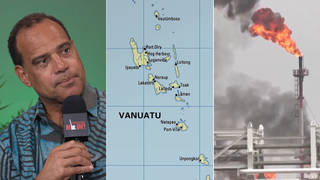
Topics
Joining the other dangers on the ground in Afghanistan is the possibility that US penetrative weapons are releasing depleted uranium. Used extensively in the 1991 Gulf War, in Bosnia, and in Kosovo, these DU weapons have already been sent to Afghanistan. There is little indication that the U.S. military has warned soldiers and civilians about the possible adverse health and environmental effects.
Over ten years ago the U.S. Army released a comprehensive report about armor-piercing ammunition made of depleteduranium, a chemically toxic and mildly radioactive heavy metal. This visionary report predicted the combat use ofdepleted uranium penetrators could create localized areas of contamination consisting of large amounts ofrespirable-size uranium particles. Infantry troops were expected to receive the highest exposures through inhalationof the dust, and the Army anticipated the health outcomes could include cancer and kidney problems. Though no anti-DUmovement existed at the time, the Army predicted that depleted uranium munitions might be removed from the arsenal bypolitical force once the health and environmental impacts of depleted uranium were widely known.
Fast-forward six months. During Operation Desert Storm, American aircraft and tanks shot 320 tons of depleted uraniumin Iraq and Kuwait. Thousands of Iraqi tanks, personnel carriers and other equipment were contaminated with depleteduranium dust and debris. There are over 100,000 U.S. troops suffering from Gulf War syndrome, and due to the mixtureof exposures in that war, they still lack a common explanation for their illnesses. Many veterans and civilians havesought to blame other toxic exposures, but depleted uranium’s exact role is still in question.
Depleted uranium experts are in the process trying to verify whether the bunker buster bombs and other “penetrativeweapons” being used in Afghanistan contain depleted uranium. Until tests can be done in Afghanistan it is next toimpossible to know. But the US government describes the bunker busters as employing a dense heavy metal, which is thelanguage used for DU and also for tungsten, another metal used for kinetic energy penetrators before the cheapabundance of DU took its place.
Guest:
- Jawad Metni, director/producer, “Downwind: Depleted Uranium Weapons in the Age of Virtual War.”
Related link:











Media Options